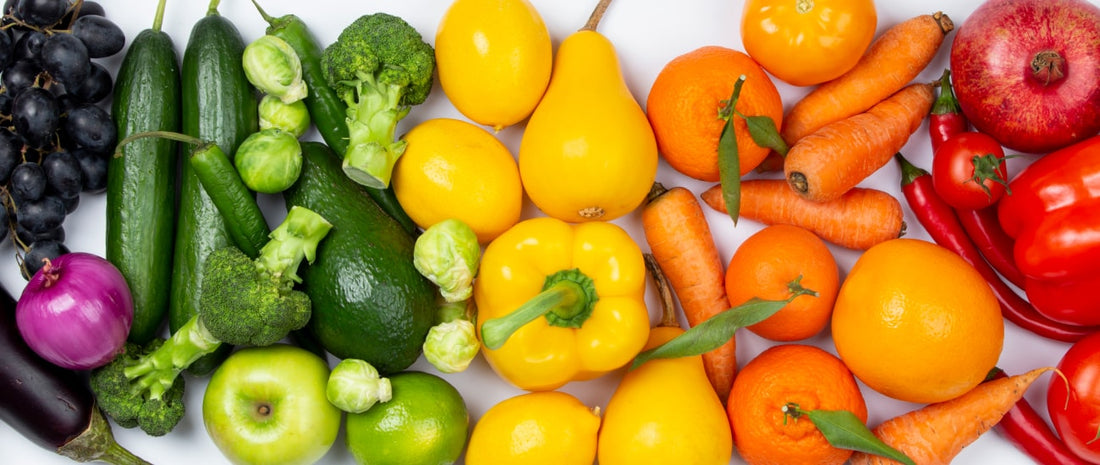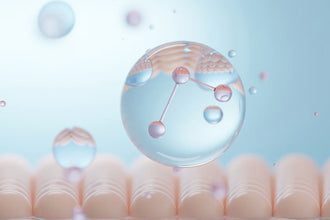
Does cooking vegetables affect nutrients?
Yes - some types of cooking absolutely destroy nutrients in food. Find out how to avoid it!
Everyone knows that properly cleaning and cooking your food can enhance the flavor, make it safer, remove chemicals and pesticides, and kill unwanted bacteria. But have you ever wondered what impacts cooking has on the nutritional properties of your food? The HealFast has your answers!
We aren’t just talking about microwaving vs baking, in this post we will give a general comparison against the most common cooking styles and maybe help you better plan for a healthier 2018 now that the holidays are over.
Let’s first start with vitamins and minerals, and use Vitamin C for ease of discussion as it's one of the most common and important nutrients your food intake can provide.
What happens to a food’s Vitamin and other nutrient contents when cooked under various methods?
Vitamin C is important because it increases the antioxidant protection you receive from your daily diet, boosts your immune system while also supporting collagen production for healthy skin and joints.
The best way to improve your Vitamin C intake is to eat raw fruits and vegetables like broccoli which we will see in the comparison research below pertaining to various cooking methods.
So what cooking method retains the most nutrient content?
Let’s look at a study that investigates the effects of five domestic cooking methods, including steaming, microwaving, boiling, stir-frying, and stir-frying followed by boiling (stir-frying/boiling), on the nutrients and health-promoting compounds of broccoli.
Vitamin C:

As you can see, steaming tends to be the best, followed by microwaving, with boiling coming in as the worst. After microwaving, we see stir-fried, stir-fried/boiled, before ending again with boiling.
At this point, you might be scratching your head with regards to seeing microwaving so highly rated. Well, the jury is still out on this one as it is a confusing topic. Keep a lookout for a future article from us on this topic.
The sneak peek of this article shows that microwaving presents controversial research results due to differences in microwaving conditions employed such as time, power, and the volume of added water, which can potentially yield different results.
How are proteins affected by different cooking methods?
Again, broccoli lends itself as an easy ingredient to discover the results. Bet you didn’t know it also contains a good amount of protein as well.

1. Raw; 2. Boiled; 3. Steamed; 4. Microwaved; 5. Stir-fried; 6. Stir-fried/boiled
You guessed it, unfortunately, all cooking methods reduce levels of glucosinates, but steaming, in this case, seems to be a clear winner.
On a side note, this same story holds true for chlorophylls and carotenoids - i.e. the compounds found in greens that exhibit anti-carcinogenic and anti-mutagenic properties.
So in conclusion - steam your vegetables if you can’t eat them raw.
Nutrient and health-promoting compounds in broccoli are significantly affected by domestic cooking. All cooking treatments, except steaming, caused great losses of chlorophyll and vitamin C. All cooking treatments caused significant decreases of total soluble while steaming obtained the best retention.
Total aliphatic and indole glucosinolates were significantly modified by all cooking treatments, except that total aliphatic glucosinolates were not modified by steaming.
Word of advice, if you can stomach it and don’t mind the flavor, drinking the broth left over from steaming or boiling your vegetables might replace some lost nutrients.
What cooking method losses the most nutrients?
Let’s note that stir-frying and stir-frying/boiling presented the highest losses of nutrients. This is particularly concerning for those late-night Chinese food orders - since these are the two methods that are most popular in Chinese cuisine and cause the greatest losses of beneficial nutrients.
We hope you enjoyed this post and invite you to sign up for our newsletter and drop us some questions for post topics you would like to see answered in the future. Until then stay healthy and be safe!
References:
-
Yuan G, Sun B, Yuan J, Wang Q. Effects of different cooking methods on health-promoting compounds of broccoli. Journal of Zhejiang University Science B. 2009;10(8):580-588. doi:10.1631/jzus.B0920051.
-
Ciska E, Kozlowska H. The effect of cooking on the glucosinolates content in white cabbage. Eur Food Res Technol. 2001;212(5):582–587. doi: 10.1007/s002170100293.
-
Gliszczyńska-Świgło A, Ciska E, Pawlak-Lemanska K, Chmielewski J, Borkowski T, Tyrakowska B. Changes in the content of health-promoting compounds and antioxidant activity of broccoli after domestic processing. Food Addit Contam. 2006;23(11):1088–1098. doi: 10.1080/02652030600887594.
-
Haughn GW, Davin L, Giblin M, Underhill EW. Biochemical genetics of plant secondary metabolites in Arabidopsis thaliana: the glucosinolates. Plant Physiol. 1991;97(1):217–226. doi: 10.1104/pp.97.1.217
-
Hudson DE, Dalal A, Lachance PA. Retention of vitamins in fresh and frozen broccoli prepared by different cooking methods. J Food Qual. 1985;8(1):45–50. DOI: 10.1111/j.1745-4557.1985.tb00832.x.
-
Jia CG, Xu CJ, Wei J, Yuan J, Yuan GF, Wang BL, Wang QM. Effect of modified atmosphere packaging on visual quality and glucosinolates of broccoli florets. Food Chem. 2009;114(1):28–37. doi: 10.1016/j.foodchem.2008.09.009.
-
Lee SK, Kader AA. Preharvest and postharvest factors influencing vitamin C content of horticultural crops. Postharvest Biol Technol. 2000;20(3):207–220. doi: 10.1016/S0925-5214(00)00133-2.
-
Lin CH, Chang CY. Textural change and antioxidant properties of broccoli under different cooking treatments. Food Chem. 2005;90(1-2):9–15. doi: 10.1016/j.foodchem.2004.02.053.
-
Liu XQ, Li YH. Epidemiological and nutritional research on the prevention of cardiovascular disease in China. Br J Nutr. 2000;84(6):S199–S203. doi: 10.1079/096582197388699.
-
López-Berenguer C, Carvajal M, Moreno DA, Garcia-Viguera C. Effects of microwave cooking conditions on bioactive compounds present in broccoli inflorescences. J Agric Food Chem. 2007;55(24):10001–10007. doi: 10.1021/jf071680t.
-
Masrizal MA, Giraud DW, Driskell JA. Retention of vitamin C, iron, and beta-carotene in vegetables prepared using different cooking methods. J Food Qual. 1997;20(5):403–418. doi: 10.1111/j.1745-4557.1997.tb00483.x.
-
Matusheski NV, Swarup R, Juvik JA, Mithen R, Bennett M, Jeffery EH. Epithiospecifier protein from broccoli (Brassica oleracea L. ssp. Italica) inhibits the formation of the anticancer agent sulforaphane. J Agric Food Chem. 2006;54(6):2069–2076. doi: 10.1021/jf0525277.
-
Miglio C, Chiavaro E, Visconti A, Fogliano V, Pellegrini N. Effects of different cooking methods on nutritional and physicochemical characteristics of selected vegetables. J Agric Food Chem. 2008;56(1):139–147. doi: 10.1021/jf072304b.
General Disclaimer: All information here is for educational purposes only and is not meant to cure, heal, diagnose nor treat. This information must not be used as a replacement for medical advice, nor can the writer take any responsibility for anyone using the information instead of consulting a healthcare professional. All serious disease needs a physician.














